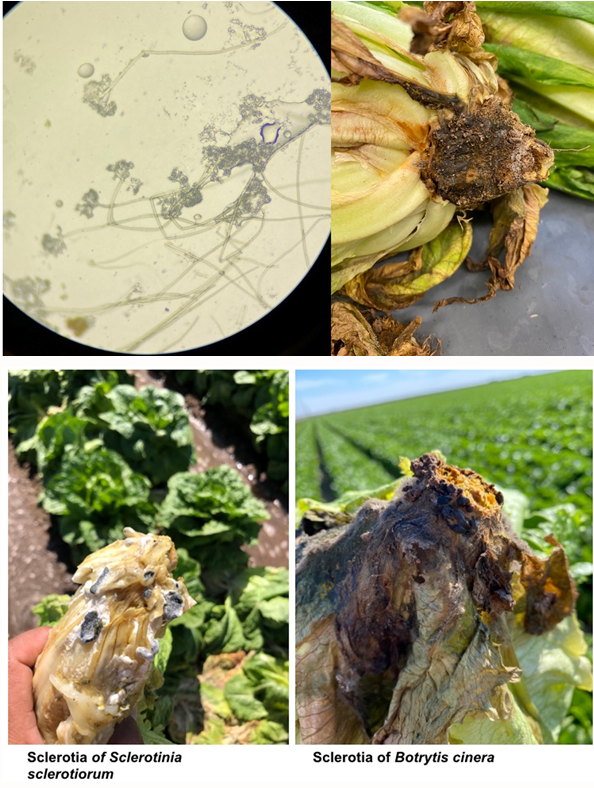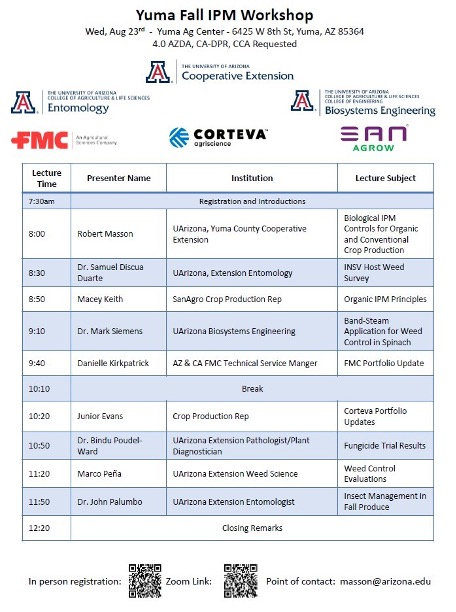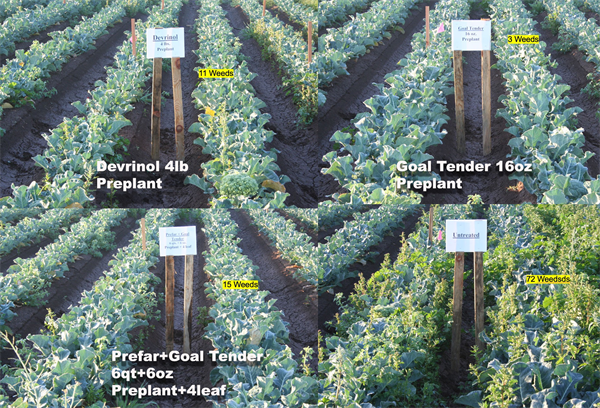May 3, 2023
Botrytis Crown Rot of Lettuce 2 (2023)

Botrytis rot is not considered a major problem in lettuce and we saw the disease in only couple of fields this growing season. However, it can cause significant damage/loss when the field conditions are favorable for the pathogen. Cool wet conditions are favorable for the pathogen. Symptoms include water-soaked, brownish-gray to brownish-orange, soft wet rot that occurs on the oldest leaves in contact with the soil. Old leaves are more susceptible than young leaves and the fungus can move into the healthy parts. Fuzzy gray growth can be observed in the disease area which is characteristic of the pathogen. In worse cases, the entire plant can collapse. Romaine cultivars, transplanted lettuce that are big and have leaves touching the soil are more susceptible.
The pathogen: Botrytis cinerea
Botrytis cinerea affects most vegetable and fruit crops, as well as a large number of shrubs, trees, flowers, and weeds. Outdoors Botrytis overwinters in the soil as mycelium on plant debris, and as black, hard, flat or irregular sclerotia in the soil and plant debris, or mixed with seed. The fungus is spread by anything that moves soil or plant debris, or transports sclerotia. The fungus requires free moisture (wet surfaces) for germination, and cool 60 to 77 F, damp weather with little wind for optimal infection, growth, sporulation, and spore release. Botrytis is also active at low temperatures, and can cause problems on vegetables stored for weeks or months at temperatures ranging from 32 to 50. Infection rarely occurs at temperatures above 77 F. Once infection occurs, the fungus grows over a range of 32 to 96 F.
Masses of microscopic conidia (asexual spores) are produced on the surface of colonized tissues in tiny grape-like clusters (see picture). They are carried by humid air currents, splashing water, tools, and clothing, to healthy plants where they initiate new infections. Conidia usually do not penetrate living tissue directly, but rather infect through wounds, or by first colonizing dead tissues (old flower petals, dying foliage, etc.) then growing into the living parts of the plant.
Disease management:
1. Buy high-quality seed of recommended varieties. Treat the seed before planting.
2. Practice clean cultivation. Plant in a light, well-drained, well-prepared, fertile seedbed at the time recommended for your area. If feasible, sterilize the seedbed soil before planting, preferably with heat. Steam all soil used for plantbeds at 180 F (81 C) for 30 minutes or 160 F (71 C) for one hour.
3. Avoid heavy soils, heavy seeding, overcrowding, poor air circulation, planting too deep, over-fertilizing (especially with nitrogen), and wet mulches.
4. Focus on healthy plant vigor. Do not over fertilize.
5. Use drop or furrow irrigation instead of sprinklers. If sprinklers have to be used, irrigate morning or early afternoon giving enough time for foliage to dry.
6. Apply recommended fungicides when conditions favor disease development. Make sure to rotate fungicide to avoid development of resistance.
To contact Bindu Poudel go to:
bpoudel@email.arizona.edu











